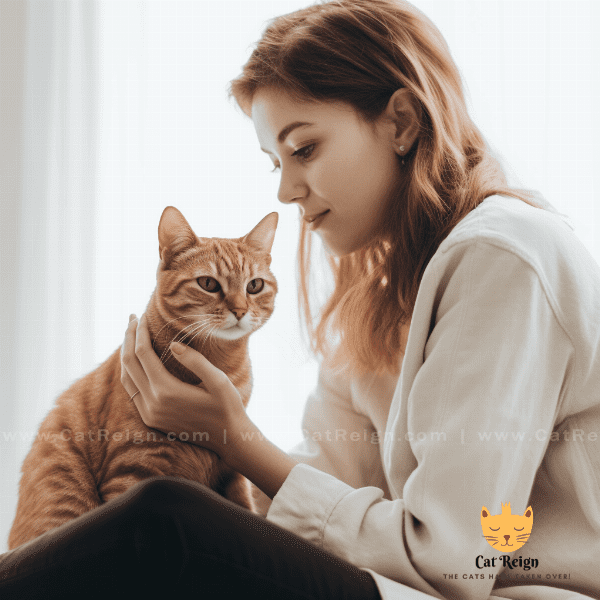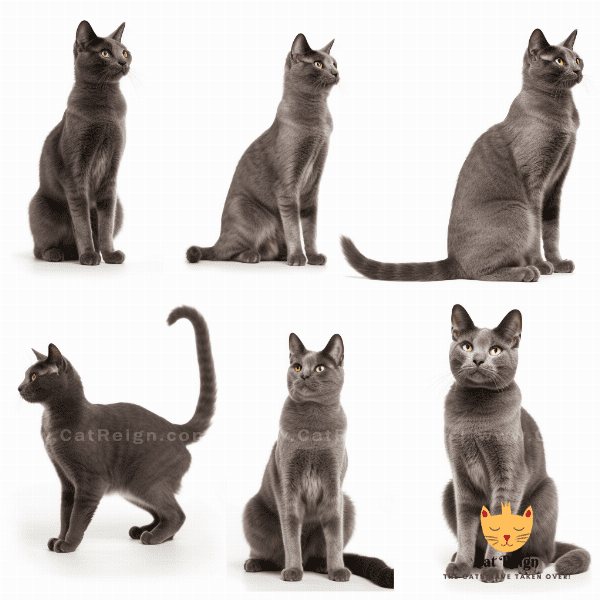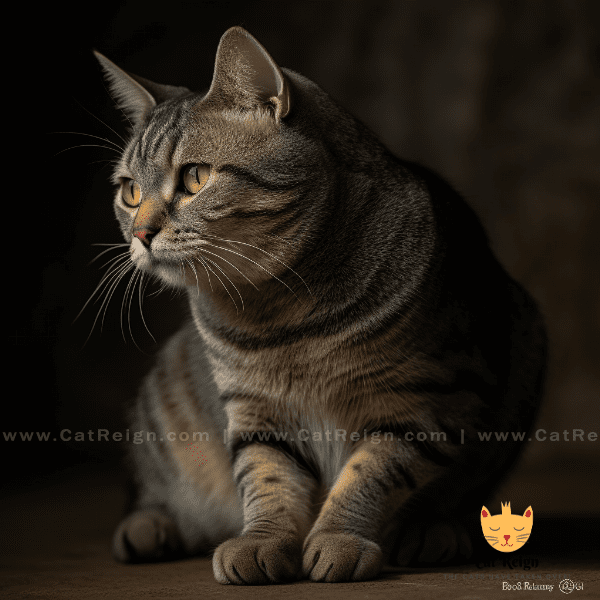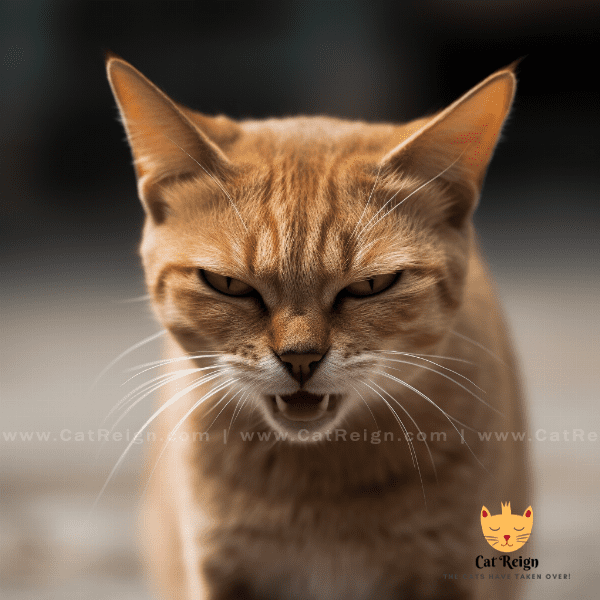Table of Contents
- Introduction to Feline Communication
- The Significance of Cat Eye Language
- Understanding the Different Types of Cat Eye Shapes
- Deciphering the Meaning Behind the Pupil Size
- Interpreting the Movement of the Eyes and Eyebrows
- Reading the Expressions of a Cat’s Face
- The Role of Tail and Body Language in Feline Communication
- Common Misconceptions About Cat Eye Language
- Tips for Communicating Effectively with Your Cat
- Conclusion: Enhancing Your Bond Through Feline Communication
Introduction to Feline Communication
Cats are fascinating creatures with unique communication methods that differ from humans and other animals. Their communication is based on a complex system of visual and vocal cues, with body language and facial expressions being particularly important. Understanding your cat’s communication style can deepen your relationship and help prevent misunderstandings.
The Importance of Feline Communication
Feline communication is essential for cats to convey their needs, emotions, and intentions. It allows them to interact with their environment, other animals, and humans. Cats use various communication methods, including body language, vocalizations, and scent marking, to convey messages.
The Science Behind Feline Communication
Researchers have studied feline communication for years, and their findings have shed light on the complexity of cats’ social lives. Studies have shown that cats have a sophisticated way of communicating with each other, and they can even communicate with their owners. For example, a study conducted by the University of Sussex found that cats use different types of vocalizations to convey different messages to their owners, such as a plea for food or attention.
The Benefits of Understanding Feline Communication
Understanding your cat’s communication style can help you build a stronger bond with your pet. It can also prevent misunderstandings and conflicts between you and your cat. By learning how to read your cat’s body language and vocalizations, you can respond appropriately to their needs and emotions. This can help create a harmonious and enjoyable living environment for both you and your cat.
In summary, feline communication is a fascinating and crucial aspect of cat behavior. By learning how to decode your cat’s communication signals, you can deepen your relationship with your pet and create a more harmonious living environment.
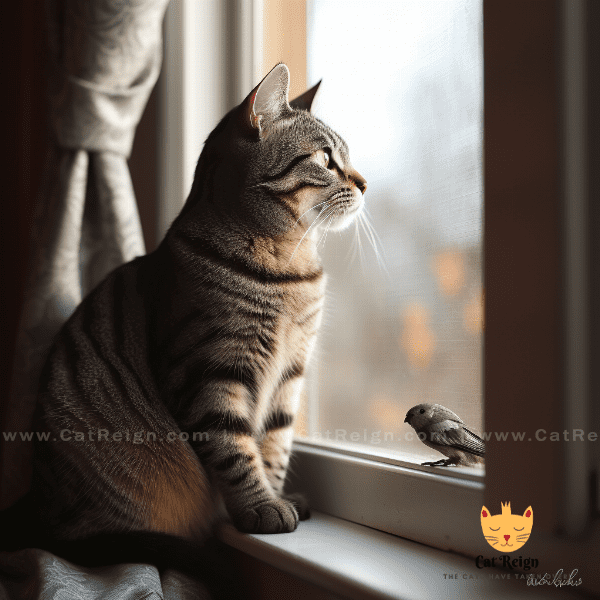
The Significance of Cat Eye Language
Cat eye language is an essential component of feline communication. It can reveal a lot about a cat’s mood, intentions, and feelings. By understanding the different types of eye shapes, pupil sizes, and movements, you can gain insights into your cat’s communication style.
The Role of Eye Shapes in Feline Communication
Cats use different types of eye shapes to communicate their emotions and intentions. For example, when a cat is relaxed and content, their eyes are round and wide-open. On the other hand, when a cat is fearful or aggressive, their pupils may be dilated, and their eyes may appear almond-shaped. By paying attention to your cat’s eye shapes, you can get a better understanding of their current emotional state.
The Importance of Pupil Size in Cat Eye Language
Cat pupils can change in size based on the level of light and their emotions. When a cat is relaxed, their pupils are usually small and round. However, when a cat is frightened or aggressive, their pupils can dilate, making them appear larger. This is because dilated pupils allow more light into the eyes, enabling cats to see better in low light conditions. By observing your cat’s pupil size, you can gain insights into their emotional state.
Interpreting the Movement of the Eyes and Eyebrows
Cats can use the movement of their eyes and eyebrows to communicate various messages. For example, when a cat blinks slowly, it is often a sign of contentment and relaxation. However, when a cat stares intently, it may be a sign of aggression or fear. By observing your cat’s eye movements, you can gain insights into their current emotional state.
Conclusion
Cat eye language is a crucial aspect of feline communication. By understanding the significance of eye shapes, pupil size, and eye movements, you can gain insights into your cat’s mood, intentions, and emotions. This can help you build a stronger bond with your cat and respond appropriately to their needs.
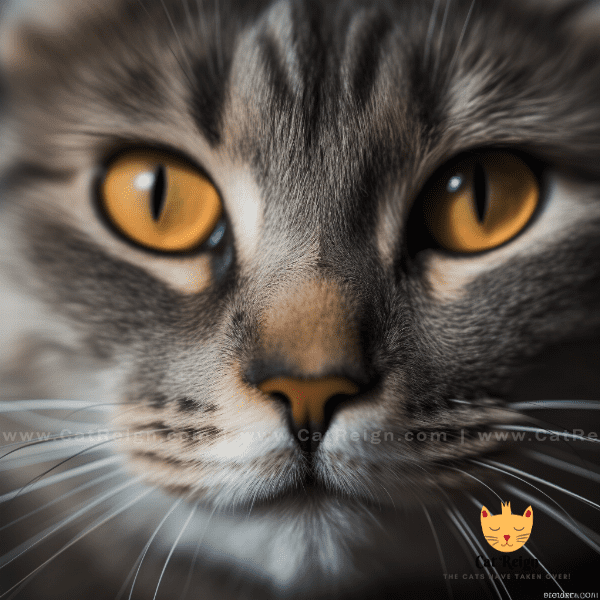
Understanding the Different Types of Cat Eye Shapes
Round Eyes
Round eyes are the most common eye shape in cats. They are usually wide open and round, indicating that the cat is relaxed and content. Round eyes can also be a sign of curiosity and playfulness.
Almond-Shaped Eyes
Almond-shaped eyes are elongated and narrow, giving cats a more intense look. This eye shape is often associated with fear, aggression, and anxiety. When a cat feels threatened or scared, their pupils may dilate, making their almond-shaped eyes appear even more significant.
Half-Moon Eyes
Half-moon eyes are when a cat partially closes their eyes, creating a relaxed and content expression. This eye shape is often a sign of trust and affection between cats and humans. Cats may also use half-moon eyes to show that they are relaxed and comfortable in their surroundings.
Wide Open Eyes
Wide-open eyes indicate that a cat is alert and focused on their surroundings. This eye shape can also be a sign of fear or anxiety if the cat is trying to gather as much information as possible to assess the situation.
Conclusion
Understanding the different types of cat eye shapes can help you interpret your cat’s emotions and intentions. By paying attention to their eye shapes, you can gain insights into their current emotional state and respond appropriately. Remember that every cat is unique, and their eye language may vary based on their personality and experiences. By observing your cat’s eye shapes over time, you can build a stronger bond with your feline companion.
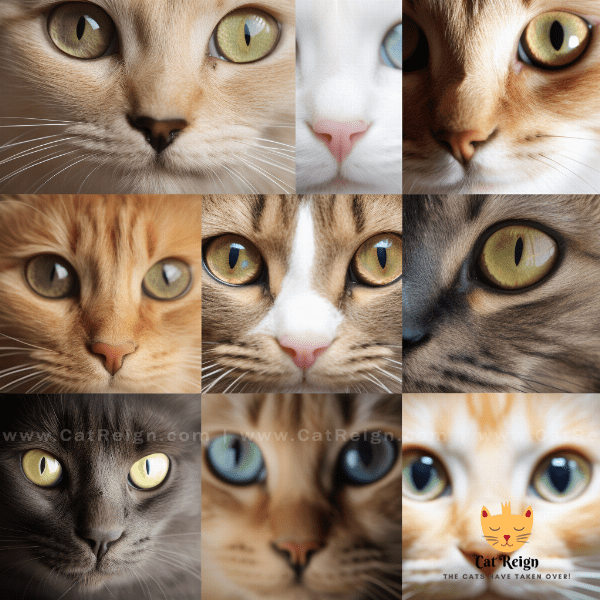
Deciphering the Meaning Behind the Pupil Size
Cat pupils can change in size based on their emotions and the level of light in their environment. Understanding the meaning behind the pupil size can help you decode your cat’s eye language and respond appropriately.
Small Pupils
Small pupils usually indicate that a cat is relaxed and comfortable in their surroundings. This pupil size is often associated with contentment and playfulness. When a cat is happy and at ease, their pupils are usually small and round.
Large Pupils
Large pupils can be a sign of fear, anxiety, or aggression in cats. When a cat feels threatened or scared, their pupils can dilate, making them appear larger. This is because dilated pupils allow more light into the eyes, enabling the cat to see better in low light conditions. Large pupils can also be a sign of excitement or arousal in cats.
Uneven Pupils
Uneven pupils, also known as anisocoria, occur when one pupil is larger than the other. This can be a sign of an underlying medical condition or injury, such as glaucoma or a head injury. If you notice that your cat’s pupils are uneven, it is essential to seek veterinary attention as soon as possible.
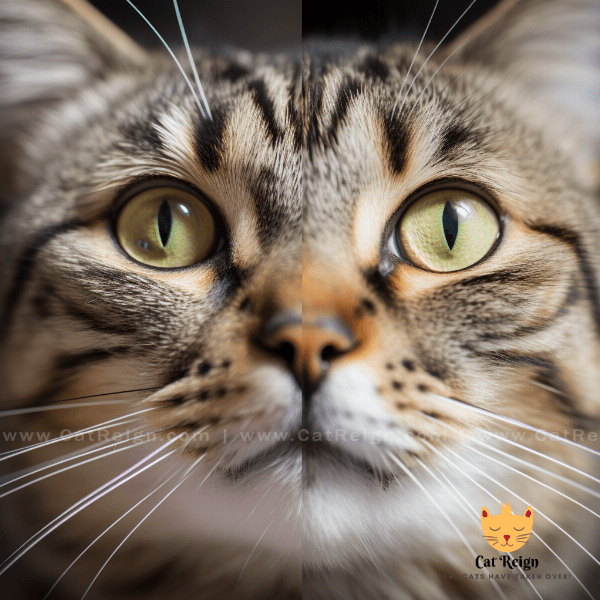
Interpreting the Movement of the Eyes and Eyebrows
Cats can use the movement of their eyes and eyebrows to communicate various messages. Understanding these movements can help you decode your cat’s eye language and respond appropriately.
Slow Blinks
Slow blinks are a sign of relaxation and contentment in cats. When a cat slowly blinks, they are communicating trust and affection towards their human or feline companion. This is often referred to as a “kitty kiss,” and it is a sign that your cat feels comfortable and safe in your presence.
Staring
Staring can be a sign of aggression, fear, or curiosity in cats. When a cat stares intently, they are trying to gather as much information as possible to assess the situation. This can be a precursor to a possible attack or a sign that the cat is feeling threatened.
Eye Widening
Eye widening is often a sign of surprise or excitement in cats. When a cat sees something that interests them, their eyes can widen in anticipation. This is often accompanied by a focused stare or a tail twitch, indicating that the cat is alert and ready to pounce.
Raised Eyebrows
Raised eyebrows can be a sign of curiosity or surprise in cats. When a cat raises their eyebrows, they are indicating that they are interested in something or someone. This can be accompanied by a focused stare or a slow approach, indicating that the cat is curious and investigating their surroundings.
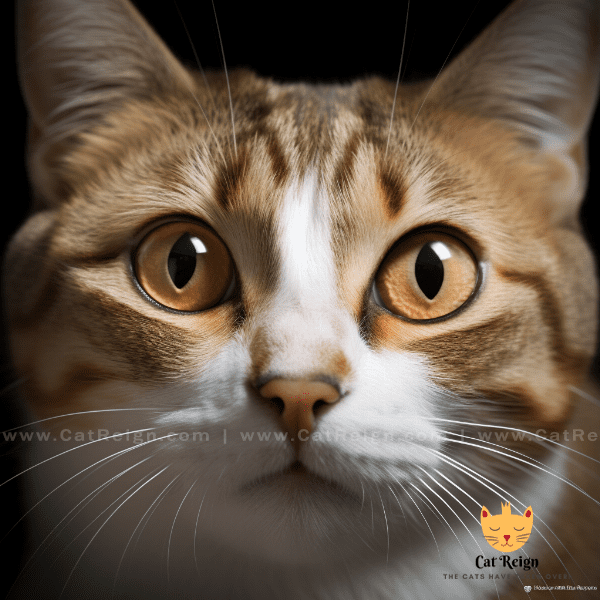
Reading the Expressions of a Cat’s Face
A cat’s face can reveal a lot about their emotions and intentions. Understanding the different expressions of a cat’s face can help you decode their communication style and respond appropriately.
Relaxed Face
A relaxed face is a sign that a cat is calm and content. When a cat is relaxed, their face appears soft and their eyes are round and wide-open. This expression is often accompanied by a slow blink or a gentle purr, indicating that the cat is happy and comfortable.
Tense Face
A tense face is often a sign of fear or aggression in cats. When a cat is tense, their face appears stiff, and their eyes may be wide open or narrow. This expression is often accompanied by a hiss, growl, or defensive posture, indicating that the cat feels threatened and is ready to attack.
Squinted Eyes
Squinted eyes are often a sign of relaxation and affection in cats. When a cat squints their eyes, they are indicating that they feel safe and comfortable in their environment. This expression is often accompanied by a relaxed body posture and a slow blink, indicating that the cat is happy and content.
Grimacing
Grimacing is a sign that a cat is in pain or discomfort. When a cat grimaces, their face appears tense, and their eyes may be partially closed. This expression is often accompanied by a vocalization or a defensive posture, indicating that the cat is in distress and needs immediate attention.

The Role of Tail and Body Language in Feline Communication
Tail and body language are essential components of feline communication. Cats use various postures and movements to convey their emotions and intentions.
The Significance of Tail Position
A cat’s tail position can reveal a lot about their emotions and intentions. When a cat’s tail is up and curved, it is often a sign of confidence and happiness. When a cat’s tail is tucked between their legs, it is a sign of fear or submission. A cat’s tail can also be used to indicate aggression, with an upright and puffed tail being a sign of a cat that is ready to attack.
Body Posture
A cat’s body posture can also reveal their emotions and intentions. When a cat is relaxed, their body appears loose and comfortable. When a cat is tense, their body appears stiff, and their muscles are often visibly tense. When a cat is preparing to attack, they may crouch down low to the ground, indicating that they are ready to pounce.
Vocalizations
In addition to tail and body language, cats also use vocalizations to communicate their emotions and intentions. Different types of vocalizations can convey different messages, with meows being a sign of attention-seeking, and hissing and growling being a sign of aggression or fear.

Common Misconceptions About Cat Eye Language
There are many misconceptions about cat eye language that can lead to misunderstandings and misinterpretations. Here are some of the most common misconceptions about cat eye language:
Misconception: Cats Only Blink to Clean Their Eyes
While it is true that cats use blinking to clean their eyes, they also use slow blinking as a form of communication. When a cat slowly blinks, it is often a sign of relaxation and contentment. This expression is known as a “kitty kiss,” and it indicates that your cat trusts and feels affection towards you.
Misconception: Dilated Pupils Always Indicate Aggression
While dilated pupils can be a sign of aggression in cats, they can also indicate excitement or arousal. When a cat sees something that interests them, their pupils may dilate in anticipation. It is important to consider the context and other body language cues when interpreting a cat’s pupil size.
Misconception: Almond-Shaped Eyes Always Indicate Fear
While almond-shaped eyes are often associated with fear in cats, they can also be a sign of aggression or excitement. When a cat is preparing to attack, their pupils may dilate, making their almond-shaped eyes appear even more significant. It is essential to consider the context and other body language cues when interpreting a cat’s eye shape.
Misconception: Cats Use Eye Contact to Establish Dominance
While cats can use eye contact to communicate, they do not use it to establish dominance over their human or feline companions. Eye contact in cats is often a sign of curiosity or attention-seeking, and it can be a precursor to other forms of communication, such as vocalizations or body language.
Conclusion
Understanding cat eye language is a crucial aspect of feline communication. By debunking these common misconceptions, you can gain a more accurate understanding of your cat’s communication style. Remember that every cat is unique, and their eye language may vary based on their personality and experiences. By observing your cat’s eye language over time, you can build a stronger bond with your feline companion and respond appropriately to their needs.

Tips for Communicating Effectively with Your Cat
Effective communication is essential for building a strong bond with your feline companion. Here are some tips for communicating effectively with your cat:
Pay Attention to Their Body Language
As we have discussed throughout this article, cats use various forms of body language to communicate their emotions and intentions. By paying attention to your cat’s body language, you can gain insights into their current mood and respond appropriately.
Use a Soft Tone of Voice
Cats respond best to a soft and gentle tone of voice. When you speak to your cat, use a soothing tone to convey affection and warmth. Avoid speaking in a loud or harsh tone, as this can scare or agitate your cat.
Provide Positive Reinforcement
Positive reinforcement is a powerful tool for communicating with your cat. When your cat displays desirable behavior, such as using the litter box or scratching post, reward them with treats or praise. This positive reinforcement will encourage your cat to continue exhibiting the desired behavior.
Respect Their Personal Space
Cats are independent animals and value their personal space. When your cat is relaxing or sleeping, avoid disturbing them unless it is necessary. Respect their boundaries and give them the space they need to feel safe and secure.
Conclusion
Effective communication is key to building a strong bond with your cat. By paying attention to their body language, using a soft tone of voice, providing positive reinforcement, and respecting their personal space, you can communicate effectively with your feline companion and strengthen your relationship. Remember that every cat is unique, and it may take time to learn their communication style. With patience and persistence, you can build a deeper understanding of your cat’s emotions and intentions, leading to a happier and healthier relationship.
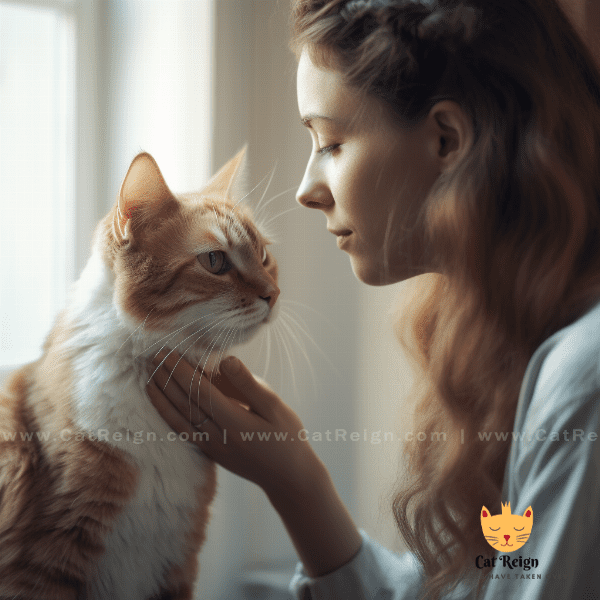
Conclusion: Enhancing Your Bond Through Feline Communication
Understanding cat eye language is a crucial aspect of feline communication. By paying attention to your cat’s body language, vocalizations, and facial expressions, you can gain insights into their emotions and intentions. By responding appropriately to your cat’s communication cues, you can build a stronger bond with your feline companion.
Remember that every cat is unique, and their communication style may vary based on their personality and experiences. By observing your cat’s behavior over time, you can gain a deeper understanding of their emotions and respond appropriately to their needs.
Effective communication with your cat requires patience, persistence, and a willingness to learn. By following the tips outlined in this article and being attentive to your cat’s communication cues, you can enhance your bond with your feline companion and ensure their well-being.
In conclusion, decoding cat eye language is an essential skill for any cat owner. By understanding your cat’s communication style, you can deepen your relationship and provide them with the care and attention they need to thrive.
